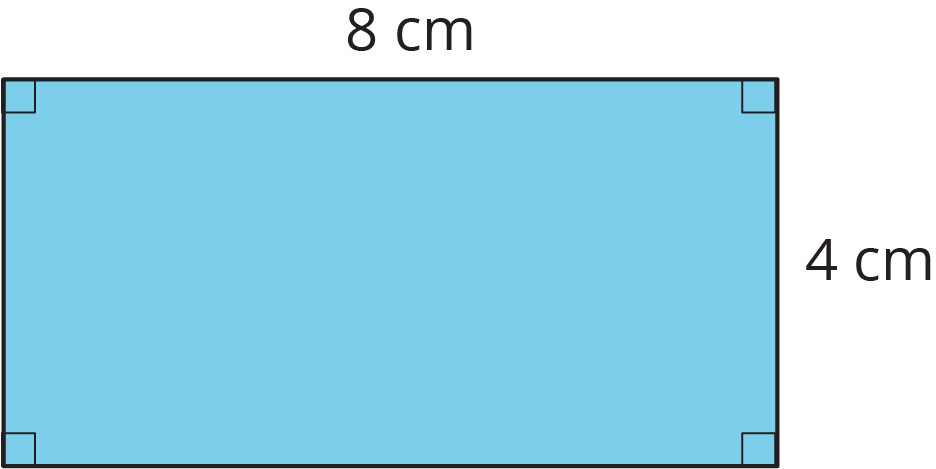3.1: Comparing Regions
Is the area of Figure A greater than, less than, or equal to the area of the shaded region in Figure B? Be prepared to explain your reasoning.
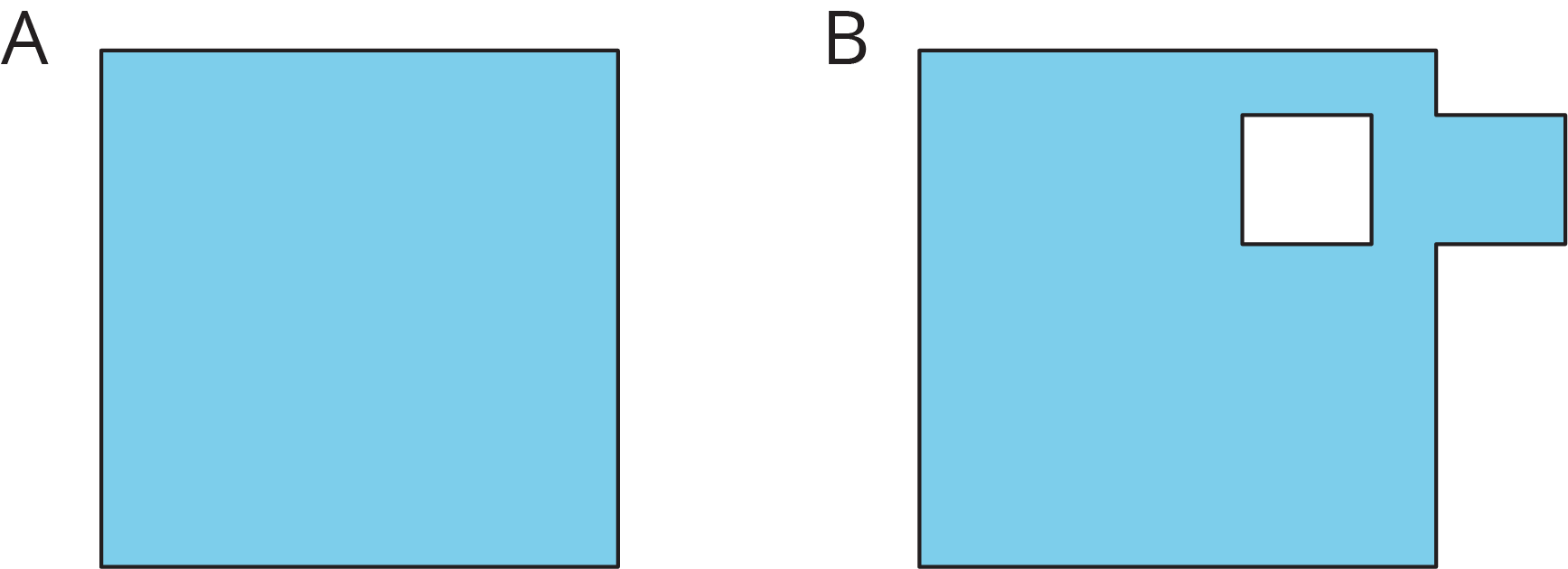
Let’s decompose and rearrange shapes to find their areas.
Is the area of Figure A greater than, less than, or equal to the area of the shaded region in Figure B? Be prepared to explain your reasoning.

Each grid square is 1 square unit. Find the area, in square units, of each shaded region without counting every square. Be prepared to explain your reasoning.
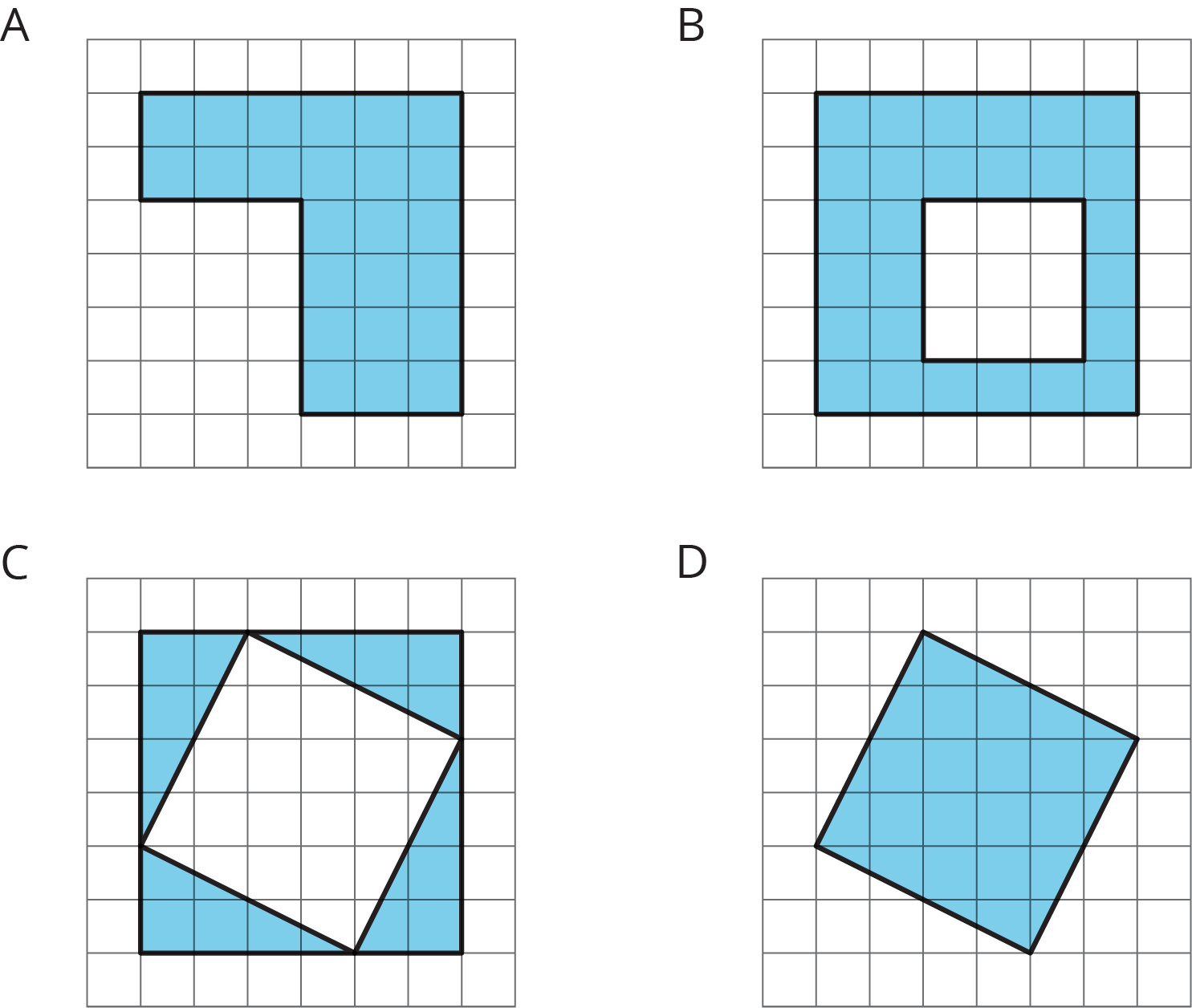
Rearrange the triangles from Figure C so they fit inside Figure D. Draw and color a diagram of your work on the grid.
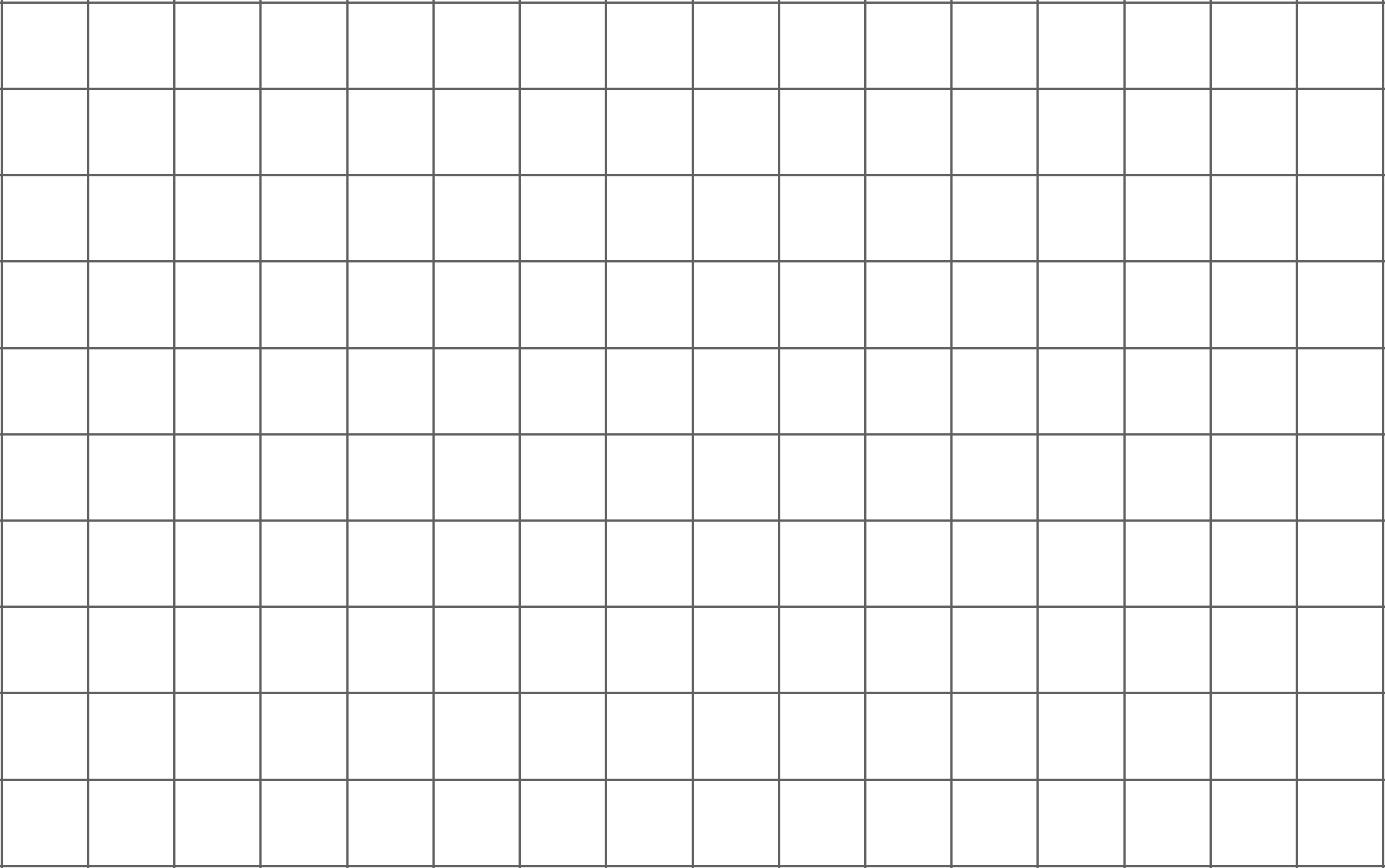
Find the area of the shaded region(s) of each figure. Explain or show your reasoning.

There are different strategies we can use to find the area of a region. We can:


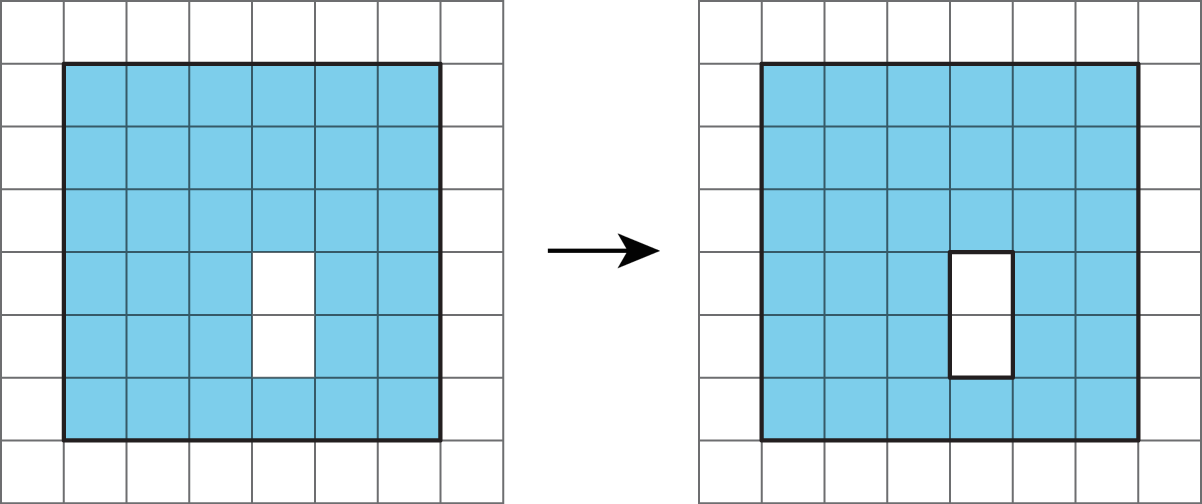
The area of a figure is always measured in square units. When both side lengths of a rectangle are given in centimeters, then the area is given in square centimeters.
The area of this rectangle is 32 square centimeters.
